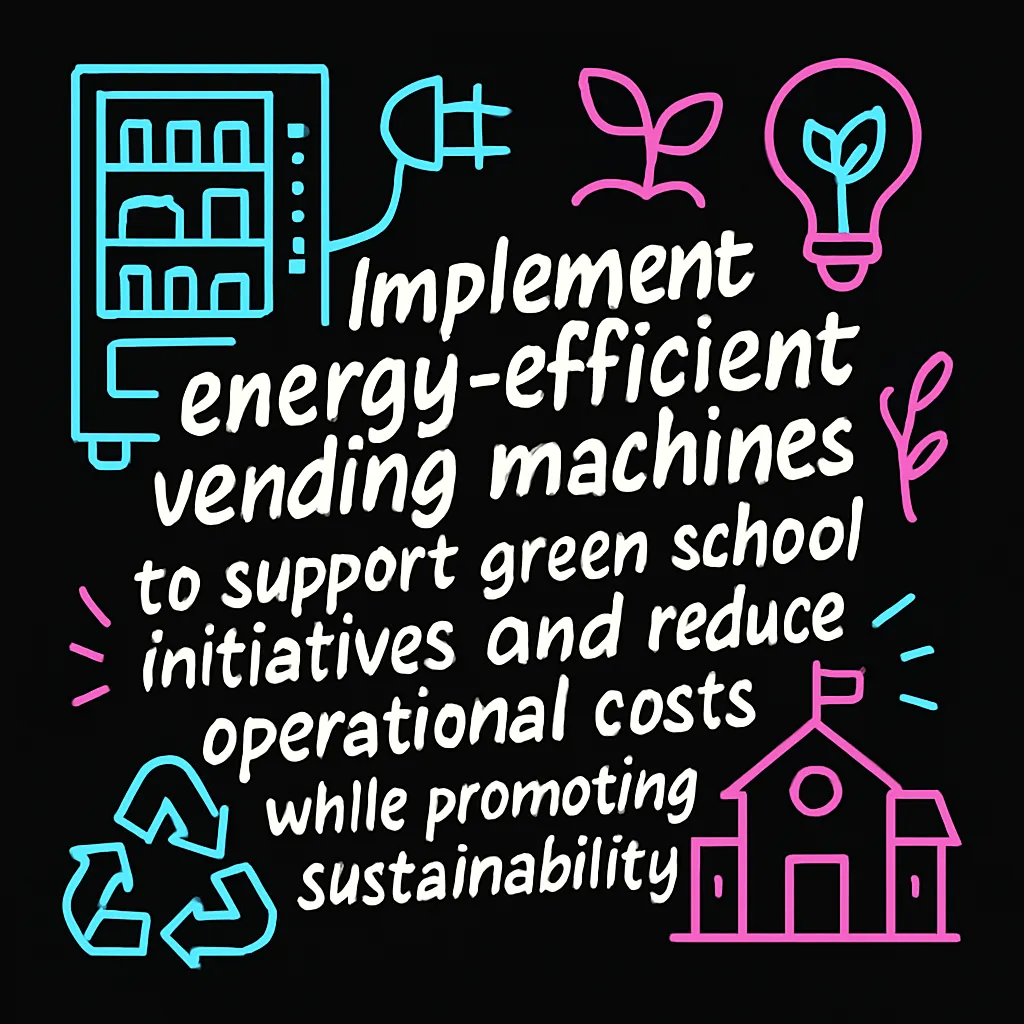Energy-Efficient Vending for Green Schools
Implement energy-efficient vending machines to support green school initiatives and reduce operational costs while promoting sustainability.
Back to Vending for Schools ResourcesImplement energy-efficient vending machines to support green school initiatives and reduce operational costs while promoting sustainability.
Back to Vending for Schools ResourcesEnergy-efficient vending machines are a natural fit for green schools, helping you reduce energy consumption and operational costs while offering convenient, sustainable refreshment options for students and staff.
![]() Reduce electricity usage and lower utility bills
Reduce electricity usage and lower utility bills
![]() Support environmental education and school sustainability goals
Support environmental education and school sustainability goals
![]() Provide healthy snacks and drinks with a smaller carbon footprint
Provide healthy snacks and drinks with a smaller carbon footprint

As schools increasingly adopt "green" initiatives, every aspect of campus operation comes under scrutiny, including refreshment services. Energy-efficient vending machines offer a practical and impactful way for educational institutions to embrace sustainability, demonstrating a commitment to environmental stewardship while significantly cutting operational costs. These modern machines are designed with advanced components that dramatically reduce energy consumption compared to older models.
Modern energy-efficient vending machines incorporate several innovative technologies to minimize their ecological impact. Features like LED lighting, enhanced insulation, and smart cooling systems that only activate when necessary contribute to substantial energy savings. Some models even utilize eco-friendly refrigerants and are built with recyclable materials, further reducing their overall carbon footprint. This commitment to efficiency resonates deeply with the core values of green schools, providing a tangible example of sustainable practices for students and staff.
Beyond environmental benefits, the financial advantages of energy-efficient vending are compelling. Schools operate on tight budgets, and reducing electricity bills through intelligent equipment can free up funds for other educational programs. Lower energy consumption means lower utility costs, offering a measurable return on investment over the machine's lifespan. These machines often require less intensive maintenance due to their advanced, durable components, further streamlining operations for busy school staff. For a broader look at school vending, consult your school administrator guide to vending.
Green schools are also typically focused on student wellness, which includes offering healthy food and beverage options. Energy-efficient vending machines can be stocked with an array of nutritious choices that align with school nutrition guidelines, such as fresh fruits, healthy snacks, and low-sugar beverages. By combining sustainability with wellness, these machines serve as a powerful educational tool, teaching students about the interconnectedness of environmental responsibility and healthy living. Providing choices that fit the USDA Smart Snacks standards while being environmentally conscious supports a holistic approach to student well-being and responsible consumption.
Energy-efficient vending machines are designed to consume less power than traditional models, often featuring advanced insulation, LED lighting, and smart power management systems.
They help schools meet sustainability goals, reduce their carbon footprint, and lower electricity bills, aligning with the principles of green school initiatives.
Key features include ENERGY STAR certification, LED interior lighting, motion sensors for display lighting, advanced cooling systems, and improved insulation.
Yes, by consuming less electricity, these machines significantly reduce operational costs, leading to tangible savings on utility bills over time.
Absolutely. Many energy-efficient models are designed to stock and properly maintain a wide range of healthy snacks, beverages, and fresh food options, meeting school nutrition guidelines.
The most widely recognized certification is ENERGY STAR, indicating that a product meets strict energy efficiency guidelines set by the EPA and Department of Energy.
Their environmental impact is measured by reduced electricity consumption, lower greenhouse gas emissions, and sometimes by their use of eco-friendly refrigerants and recyclable materials.
Yes, they complement existing green school initiatives by demonstrating a commitment to sustainability and providing an educational tool for students about environmental responsibility.
While they utilize advanced technology, maintenance requirements are generally similar to traditional machines. Regular cleaning and servicing ensure optimal performance and energy savings.
They are suitable for cafeterias, libraries, common areas, faculty lounges, and even outdoor locations (if designed for external use), offering refreshments throughout the school campus.